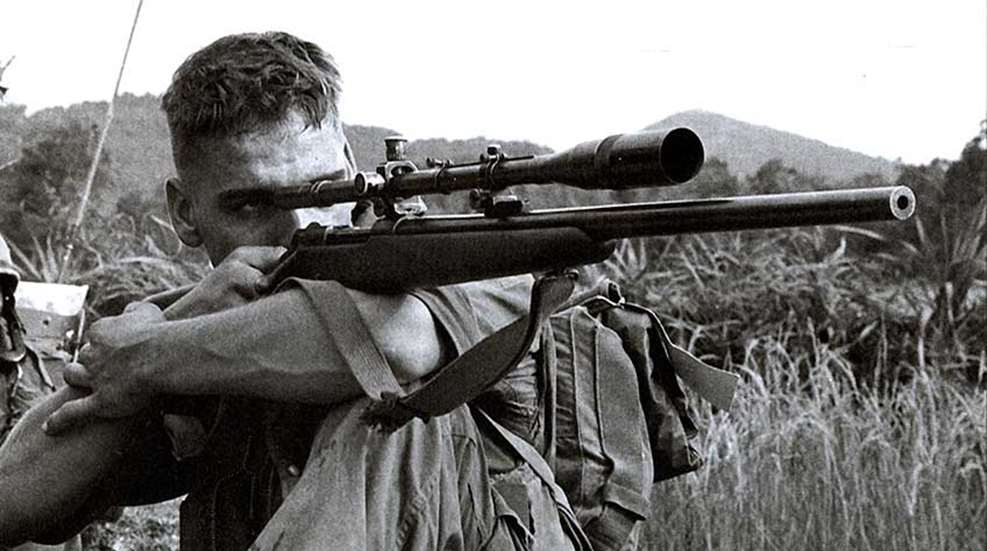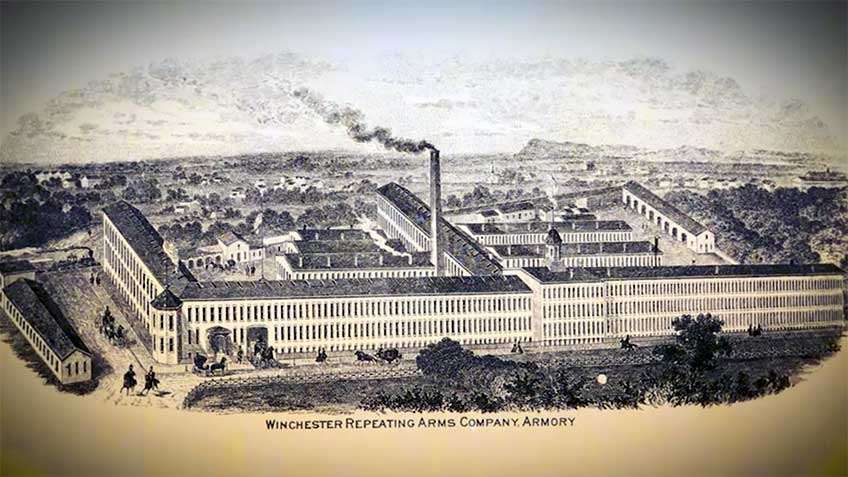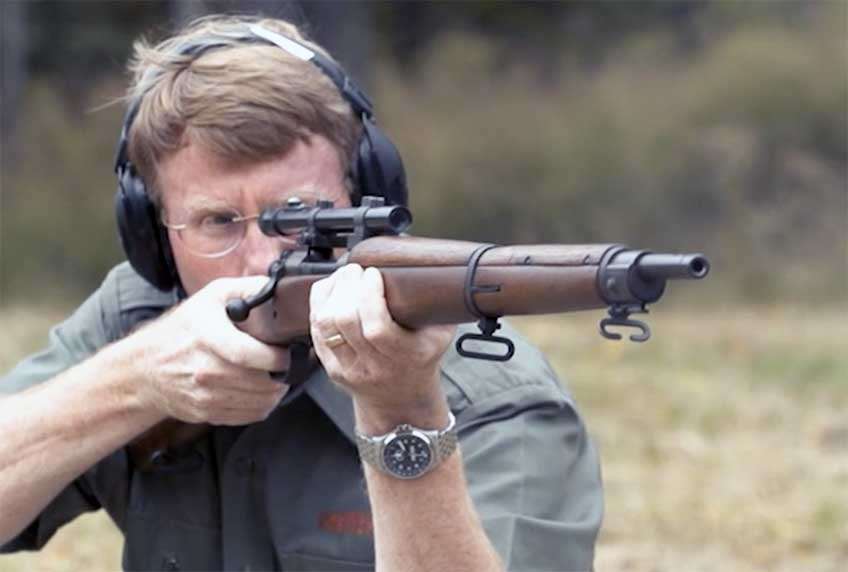- manufacturer: Winchester Repeating Arms Company, U.S. Repeating Arms Company
- designed: 1936-1963 with controlled feed system
- sights: iron sights variant = iron front, open adjustable iron rear, and tapped for scope mountscoped; sights variant: tapped for scope mounts (no iron sights)
- type: bolt-action rifle
- rate of fire: -
- cartridge: 6.5×55mm, 6.5mm Creedmoor, 6.5mm PRC, 6.8 Western, 7mm-08 Remington, 7×57mm Mauser, 7mm Remington Magnum, 7mm Shooting Times Westerner, 7mm Winchester Short Magnum, 9×57mm Mauser, .22-250 Remington, .22 Hornet, .220 Swift, .222 Remington, .223 Remington, .223 WSSM, .225 Winchester, .243 Winchester, .243 WSSM, .25-06 Remington, .250-3000 Savage, .25 WSSM, .257 Roberts, .264 Winchester Magnum, .270 Weatherby Magnum, .270 Winchester, .270 WSM, .276 Pedersen, .280 Remington, .30-06 Springfield, .300 H&H Magnum, .300 RUM, .300 Savage, .300 Weatherby Magnum, .300 Winchester Magnum, .300 WSM, .308 Winchester, .325 WSM, .338 Winchester Magnum, .35 Remington, .358 Winchester, .375 H&H Magnum, .416 Remington Magnum, .416 Rigby, .458 Winchester Magnum, .470 Capstick
- feed system: internal spring fed well with floorplate with 3-round capacity (magnum calibers), 4-round capacity (large calibers) or 5-round capacity (standard calibers)
- mass: 2.7-3.6kg (6.0-8.0lb)
GOAT hunting rifle. Based on the Mauser 98.
I allways love seeing guns, that accept 7x57mm Mauser. I shot my uncles K98 Made in 1942 befor.
And when i was in the USA i shot an G43. It has kick to it and i love it.
The Military Model 70: A Forgotten Sniper Rifle
by
- Bruce N. Canfield, Field Editor
posted on July 31, 2020
News, Rifles, Bolt-Action Rifles, Historical Rifles
Support NRA American Rifleman DONATE

This article, “The Military Model 70,” appeared originally in the April 2011 issue of American Rifleman. Above, Marine rifleman Dalton Gunderson eyes the enemy through an 8X Unertl scope on top of his Special Services-procured Winchester Model 70 in Vietnam. In the background is radio operator Jerry Dunomes. Both men served in Kilo Co., 3rd. Btn., 7th Marines, under young Marine Capt. Wiley Clapp in 1965. Clapp is, of course, an American Rifleman field editor today.
To subscribe to the magazine, visit the NRA membership page here and select American Rifleman as your member magazine.
One of the perennially popular Winchester firearms of the 20th century is the Model 70 bolt-action rifle. Introduced in 1936 as an improvement on the Model 54, the Model 70 soon set the standard for commercial bolt-action rifles. Manufactured in a wide variety of configurations and calibers, it was a favorite of many hunters, shooters and gun enthusiasts. Although never adopted for combat use by the U.S. military, some Model 70 rifles were used as sniping rifles during World War II, Korea and Vietnam.
Soon after Pearl Harbor, two members of the U.S. Marine Corps Equipment Board, Capt. George Van Orden and Chief Gy/Sgt. Calvin Lloyd, wrote a 72-page report titled “Equipment for the American Sniper,” which discussed the various types of rifles and telescopic sights available at the time. The report concluded that the best rifle/scope combination for use by U.S. Marine snipers was the Winchester Model 70 topped with an 8X target scope made by the Unertl Co.

The “Rifleman’s Rifle,” fitted with an 8X Unertl, was used by the military in long-range competition, then eventually by Marines in Vietnam.
This recommendation made its way up the chain of command. Before any official action was taken, the Marine Corps ordered 373 Model 70s chambered in .30-’06 Sprg. According to Winchester documents, these rifles were shipped to the Marine Corps on May 29, 1942. Serial numbers were in the approximate 41,000 to 50,000 range, and the rifles had 24" sporter barrels with leaf sights, sporter-checkered stocks with steel buttplates, 1" sling swivels and leather slings.
Shortly after the government acquired these rifles, Winchester reported that “all .30 Government 06 Rifles are now frozen under War Production Board Limitation Orders.” The company obviously wanted to sell as many of the Model 70s remaining in its inventory as possible. To this end, Winchester sent a letter to the U.S. Marine Corps Quartermaster on July 20, 1942, indicating it had 1,944 “Model 70 .30 Government 06 Rifles on hand, which we can offer you subject to prior sale.”

Most of these rifles had 24" barrels, but there were 105 with 20" barrels. The letter, signed by Winchester’s Edwin Pugsley, concluded: “It occurs to us that the Marine Corps may be interested in an additional quantity of [these] rifles at this time and shall be glad to submit quotation if you will advise us what styles and quantities you may be interested in.”
About a week after this letter, the Marine Corps firmly closed the door on the acquisition of any additional Model 70 rifles. A memo dated July 29, 1942, stated in part: “Subject: Rifles, Winchester, Model 70, .30 Government 06. The subject rifles are not considered suitable for general service use for the following reasons:
(a) Not sufficiently sturdy;(b) Parts are not interchangeable with M1903 and M1 parts; (c) Replacement parts will be difficult to procure; (d) Not fitted with sling swivels. These rifles are not considered suitable for use as sniper rifles. The 1047 rifles, U.S., caliber .30, M1903, ‘Snipers Equipment’ on hand at this Depot … are believed to be superior to the subject rifle both in accuracy and durability … .”

The Marine Corps clearly believed that the existing Model 1903, “tuned” to match grade, was a superior sniping rifle as compared to the Model 70. This is debatable. Regardless, the fact that there were a number of Model 1903 Marine Corps match rifles, along with spare parts, already on-hand resulted in the idea of a standardized Model 70 sniping rifle being doomed from the start.
Despite the Marine Corps’ firm rejection of the Model 70, some of these rifles did, in fact, serve overseas in combat, albeit on an unofficial basis. Sniper historian Peter R. Senich reported: “[A]ccording to firsthand accounts, a fair number of unauthorized telescope-equipped ‘personal and Marine Corps property’ Model 70s brought the reality of war to Japanese combat personnel during the early stages of World War II in the South Pacific.” The U.S. Army also procured a limited number of Model 70 rifles during World War II, but little is known about their subsequent utilization, and it appears they saw virtually no actual use.
The end of World War II essentially spelled the end of the bolt-action as a front-line U.S. military service rifle, but its inherent accuracy was too important an attribute to totally abandon, and bolt guns enjoyed a new lease on life as sniping rifles. The Korean War was the last conflict in which the World War II-vintage bolt-action M1903A1/Unertl sniper rifle was employed.
